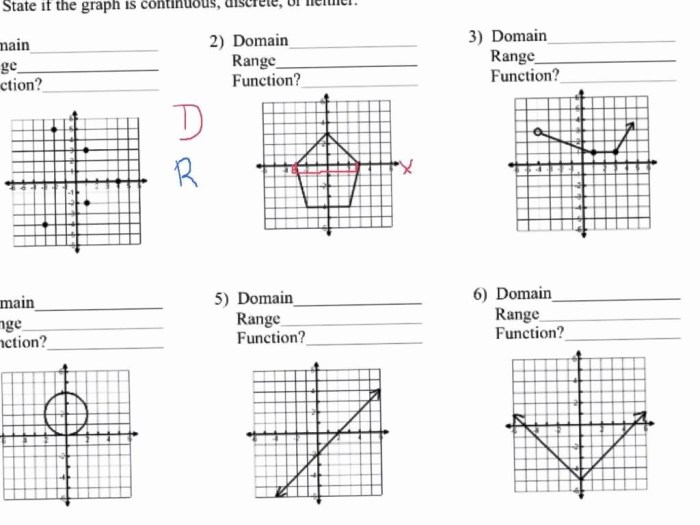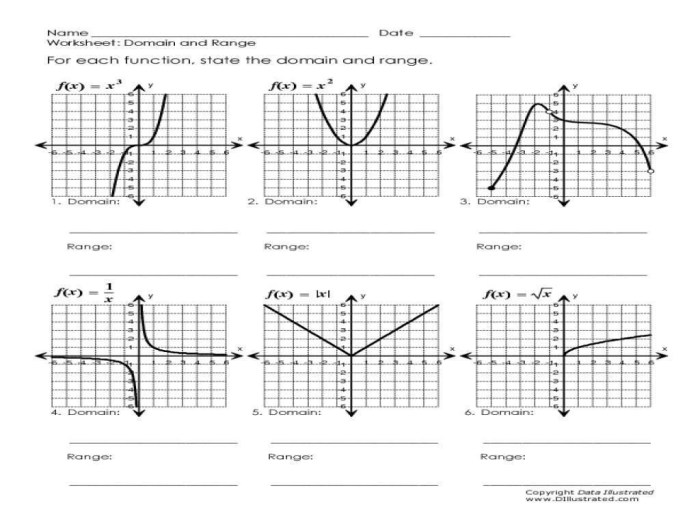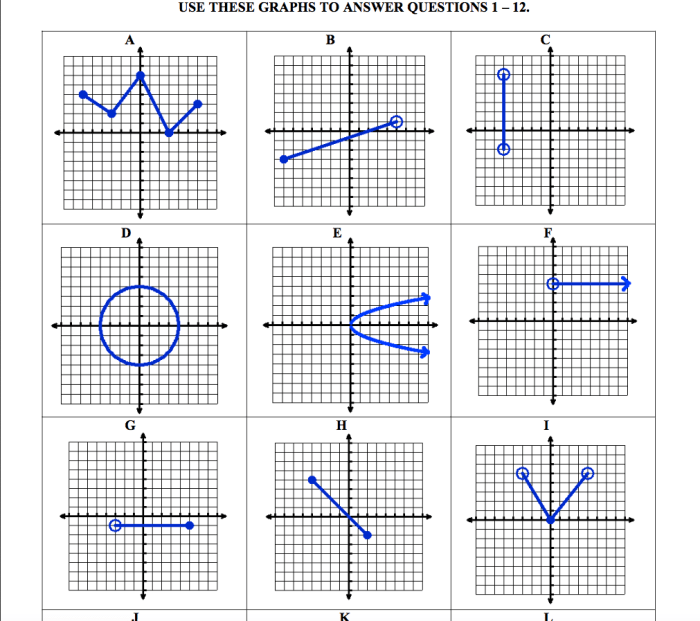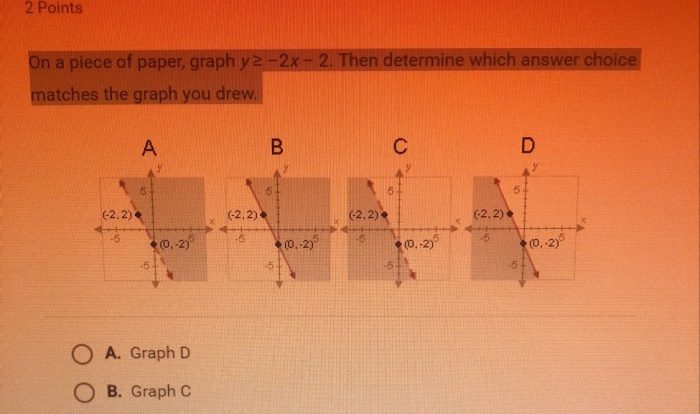Embark on an exploration of finding domain and range from a graph worksheet, a fundamental concept in mathematics that unveils the boundaries of functions and their outputs. Understanding domain and range empowers us to analyze functions, solve problems, and make informed decisions in various real-world applications.
This comprehensive guide will delve into the concepts of domain and range, provide step-by-step instructions for finding them from a graph, and explore the diverse functions and their corresponding domains and ranges. Prepare to expand your mathematical prowess and unlock the secrets of functions.
Domain and Range Concepts

In mathematics, the domain and range of a function are two essential properties that describe the input and output values of the function, respectively. Understanding domain and range is crucial for analyzing functions and their behavior.
The domainof a function is the set of all possible input values for which the function is defined. It represents the values that can be plugged into the function without causing any mathematical errors or undefined results.
The rangeof a function is the set of all possible output values that the function can produce. It represents the values that can be obtained as a result of the function’s operation.
Importance of Understanding Domain and Range
- Problem-solving:Domain and range help identify the valid inputs and outputs of a function, which is essential for solving equations, inequalities, and other mathematical problems.
- Graphing functions:The domain and range determine the extent of the graph on the x- and y-axes, respectively.
- Function analysis:Domain and range provide insights into the behavior of a function, such as its maximum and minimum values, increasing and decreasing intervals, and symmetry.
Examples of Functions with Different Domains and Ranges
- Linear function: f(x) = 2x + 1
- Domain: All real numbers
- Range: All real numbers
- Quadratic function: f(x) = x^2
- Domain: All real numbers
- Range: Non-negative real numbers
- Exponential function: f(x) = 2^x
- Domain: All real numbers
- Range: Positive real numbers
Finding Domain and Range from a Graph

To find the domain of a graph, identify the x-coordinates of all points on the graph. The domain is the set of all these x-coordinates.
To find the range of a graph, identify the y-coordinates of all points on the graph. The range is the set of all these y-coordinates.
Example Graph
Consider the following graph:
[Image of a graph with a curved line passing through the points (-2, 1), (0, 3), (2, 1), and (4, 5)]
The domain of this graph is the set of x-coordinates: -2, 0, 2, 4.
The range of this graph is the set of y-coordinates: 1, 3, 5.
Types of Functions and Their Domains and Ranges

Functions can be categorized based on their domains and ranges:
Linear Functions
Linear functions have the form f(x) = mx + b, where mand bare constants.
- Domain: All real numbers
- Range: All real numbers
Quadratic Functions
Quadratic functions have the form f(x) = ax^2 + bx + c, where a, b, and care constants.
- Domain: All real numbers
- Range: Depends on the coefficients a, b, and c
Exponential Functions
Exponential functions have the form f(x) = a^x, where ais a positive constant.
- Domain: All real numbers
- Range: Positive real numbers
Table of Domains and Ranges
| Function Type | Domain | Range ||—|—|—|| Linear | All real numbers | All real numbers || Quadratic | All real numbers | Depends on coefficients || Exponential | All real numbers | Positive real numbers |
Applications of Domain and Range: Finding Domain And Range From A Graph Worksheet

Domain and range are essential concepts in real-world applications:
Example 1: Physics, Finding domain and range from a graph worksheet
In physics, the domain and range of a function can represent the independent and dependent variables of a physical phenomenon. For instance, in a free-fall scenario, the domain could be the time of the fall, and the range could be the height of the object at that time.
Example 2: Economics
In economics, the domain and range of a function can represent the input and output of a production process. For instance, the domain could be the number of hours worked, and the range could be the number of units produced.
Significance in Problem-Solving
Understanding domain and range is crucial in problem-solving. By identifying the valid inputs and outputs of a function, we can narrow down the possible solutions and make informed decisions.
Popular Questions
What is the difference between domain and range?
The domain refers to the set of all possible input values for a function, while the range represents the set of all possible output values.
How do I find the domain of a graph?
To find the domain, identify the lowest and highest x-values for which the graph is defined.
How do I find the range of a graph?
To find the range, identify the lowest and highest y-values for which the graph is defined.

